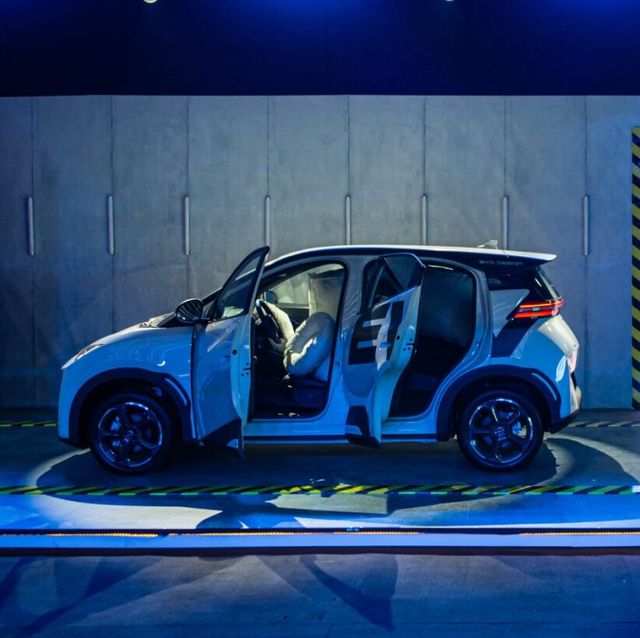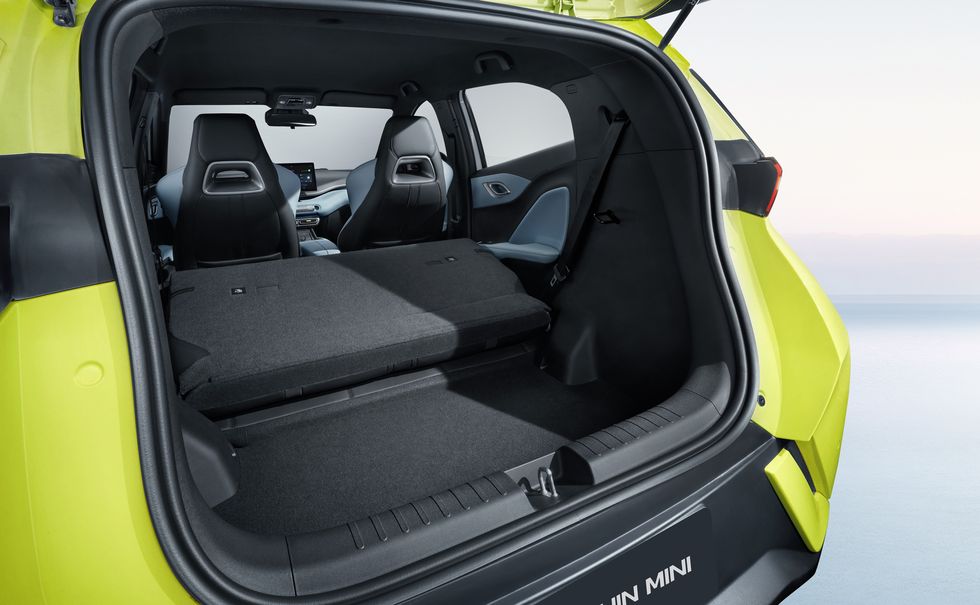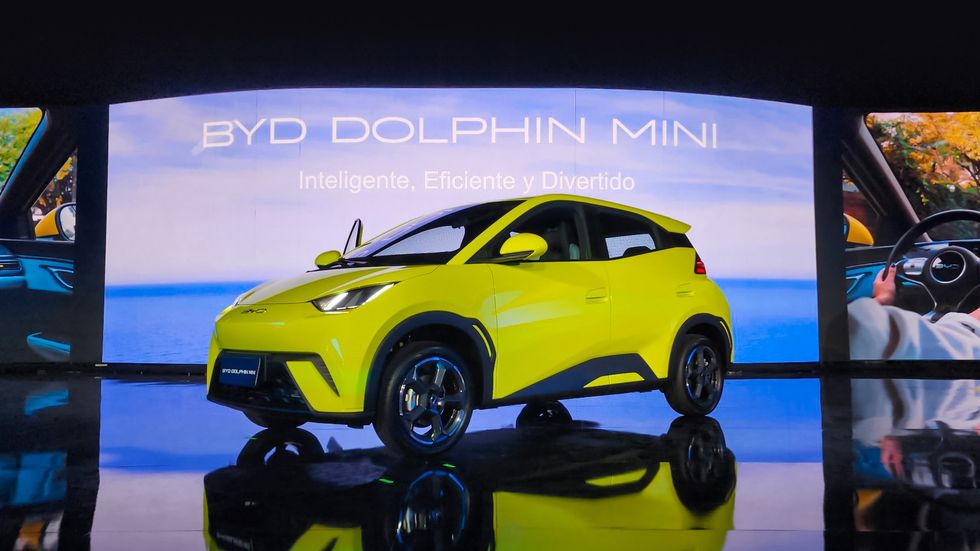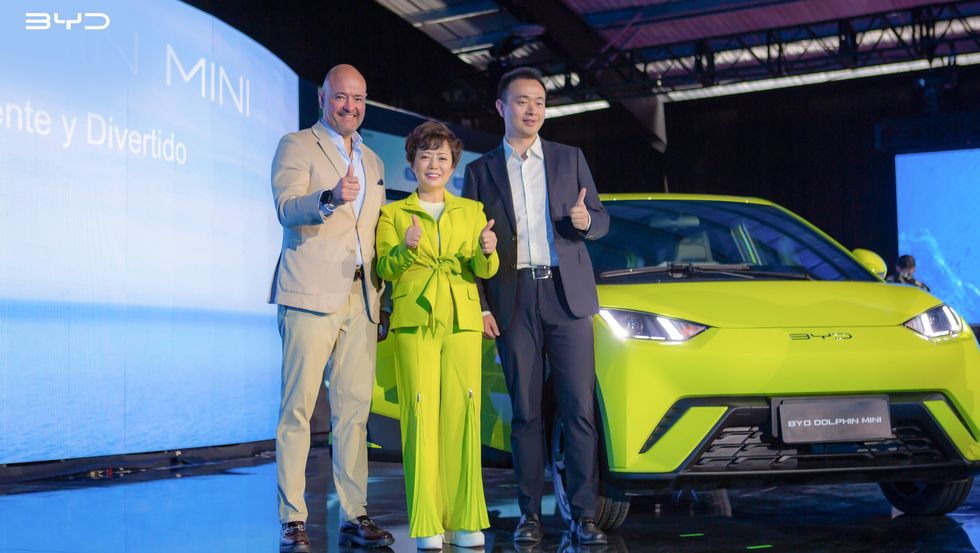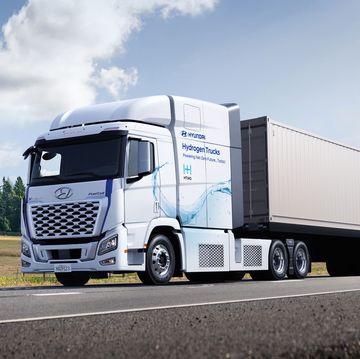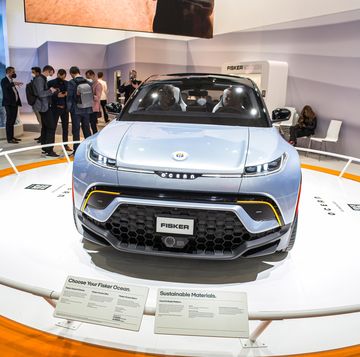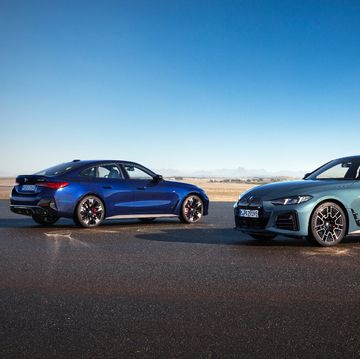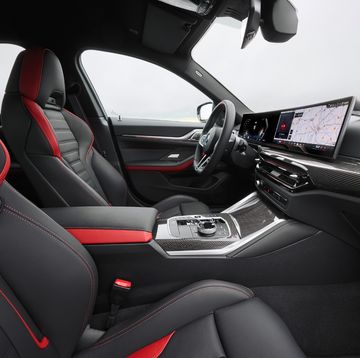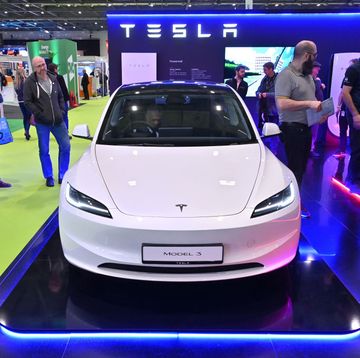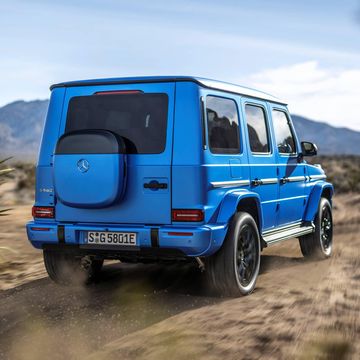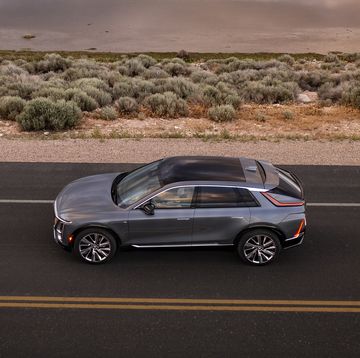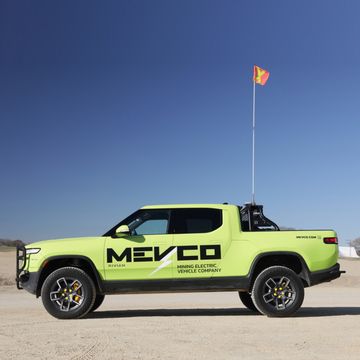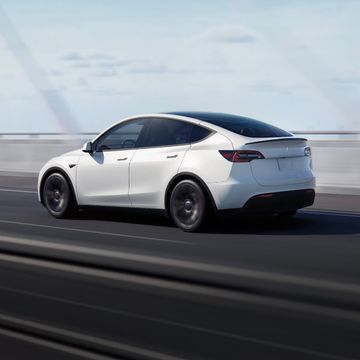- BYD says it does not plan to sell very affordable EVs in the US. But the company—which is scouting plant locations in Mexico—might have a very good economic incentive to do so.
- Imported Chinese cars are subject to prohibitive 25% tariffs. But imports from Mexico built with Chinese parts pay only a 2.5% duty under the rules of the US-Mexico-Canada Agreement.
- The Dolphin Mini (pictured above) is BYD’s fourth EV available in Mexico, after the Han, the Tang, and the Yuan Plus. BYD’s new Yuan Up, shown in China last February, could sell in the range of $14,000 to $20,000, and may be exported.
Looking for a bargain EV? Pickings are slim in the US (the Nissan Leaf starts at $29,255), but across the border in Mexico consumers can buy the BYD Dolphin Mini from Chinese automaker BYD for a mere $21,000.
It’s a small hatchback with vague Honda Fit overtones. It will reportedly go 190 miles on a charge, and if you want more there’s the Dolphin Mini Plus with 252 miles of range—and a $23,000 bottom line.
According to BYD, there are no plans to sell these very affordable EVs in the US. But the company—which is scouting plant locations in Mexico—might have a very good economic incentive to do so. Imported Chinese cars are subject to prohibitive 25% tariffs, which is why they’re still scarce here, but getting plentiful in Europe and South America.
The sky-high duties are only for cars brought to the US from China. Imports from Mexico built with Chinese parts pay only a 2.5% duty under the rules of the US-Mexico-Canada Agreement (USMCA). Add 2.5% to the cost of a Dolphin Mini and it’s still a very inexpensive EV. Americans have flocked to very low-cost cars in the past, including the $3990 Yugo in 1985 and the $4995 Hyundai Excel in 1986.
The bare-bones Elio commuter car, with a $6800 bottom line and 84 mpg, set off a reservation frenzy (although it was never produced). The Dolphin Mini is tiny, but a corresponding low price could overcome that problem.
Features of the Dolphin Mini five-door hatchback include smart styling under the direction of the company’s global design director, Wolfgang Egger, and lithium-iron-phosphate battery choices of 30.08 kWh and (in the Mini Plus) 38.88 kWh, a 10.1-inch rotating touchscreen with voice commands and Apple CarPlay/Android Auto integration, four airbags, and more. The Mexican sales goal is 50,000 units in 2024.
The Dolphin Mini is actually BYD’s fourth EV available in Mexico, after the Han, the Tang, and the Yuan Plus. BYD’s new Yuan Up, shown in China last February, could sell in the range of $14,000 to $20,000, and may be exported.
Jorge Vallejo, general director of BYD Mexico, told Autoweek in an email that the Dolphin Mini “appeals to a diverse audience, including young people looking for their first car for high school or university, or parents looking for a safe vehicle for their college-aged children.” Also attracted to it, he said, are people wanting “access to a more affordable car that incorporates new technologies.”
BYD, which sold three million cars overall in 2023, is now the largest seller of EVs on the planet, surpassing Tesla. BYD sold 330,000 Dolphin Minis in China, making it the best seller in its class, the company said.
As to where it will be sold, BYD said, “In Americas, Europe, Asia Pacific, and the Middle East, we will assess the appropriate timing for meeting our consumers in light of our business progress and market demand.” The car is now available in Brazil, Ecuador, and soon in Colombia, in addition to Mexico.
BYD has six dealerships in Mexico and plans to have 50 (with a presence in all of Mexico’s 32 states) by the end of 2024. In February, BYD Americas CEO Stella Li told Reuters the company was looking for a plant in Mexico with a production capacity of 150,000 annually.
Mike Austin, senior research analyst for EVs and mobility at Guidehouse Insights, told Autoweek, “The threat of Chinese EVs made in Mexico is an additional risk to legacy manufacturers because the free trade agreement would make it difficult to impose any protectionist measures.
“Also, it’s not just EVs. Mass-market automakers, and particularly the American companies, have had waning interest in building affordable entry-level models for years. It’s exacerbated with EVs, because these companies haven’t worked through the cost improvements from scaling up while the Chinese companies have.”
Austin points to the made-in-China Volvo EX30 EV as showing “that Chinese manufacturers can make cost-competitive vehicles even with a tariff.” The EX30 sells for $34,950. Austin adds, “I’d be remiss if I didn’t mention the historical similarity to the rise of Japanese automakers in the US market.”
In the US, automakers and their political representatives are becoming concerned.
John Bozzella, president and CEO of the Alliance for Automotive Innovation, representing carmakers, sees an advantage for China if the US moves to EVs too quickly—citing the EPA’s proposal to require 37% of new light-duty cars and trucks be battery-electric by 2027, and 60% by 2030. The Biden administration is considering weakening that standard.
In a blog post, Bozzella wrote that in a rapid shift to EVs, “Official US policy will have thrown open the doors (and the ports, as it were) to China. Before long, Chinese automakers will accelerate their entrance into the American market with low-priced EVs that meet the aggressive (and arbitrary) EPA requirements for model years 2027-2032.”
A report from the Alliance for American Manufacturing, released in February, also makes this point. The report describes as “alarming” the Chinese focus on building plants in Mexico. “They can access the United States by way of the more favorable tariffs under the USMCA. This strategy is, in effect, an effort to gain backdoor access to American consumers by circumventing existing policies that are keeping China’s autos out of the US market.”
A bipartisan group in Congress last year urged US Trade Representative Katherine Tai to increase the 25% tariff on imports from China, imposed during the Trump Administration. In a letter, they called for an investigation into “what actions should be taken to counter [China’s] industrial strategy to dominate the global automobile market.”
On March 5, US Senator Marco Rubio (R-Florida) called for increasing import tariffs by $20,000 to stop China “from flooding US auto markets.” Rubio said his legislation, with three bills, “would safeguard American automakers and workers against the influx of artificially cheap vehicles from China.”
But BYD’s Li insists the company’s focus is on local sales, and that it is not looking at possible sites conveniently close to the US border. BYD told Autoweek the company is “busy evaluating site candidates in a 124-mile radius around Mexico City, with a decision slated for the latter part of this year.”
In a Fortune interview last February, Li flatly denied interest in the American market. “We are not planning to come to the US,” she said. “It is an interesting market, but it is very complicated if you’re talking about EVs.” She said EV sales have experienced a slowdown in the US, while in China a company ignoring electric cars is “out. You will die, you have no future.”
Chinese-made cars are indeed popular in Mexico, accounting for nearly 20% of all sales there in 2023 through October, Bloomberg said. The low prices are a particular draw.
In the US now, BYD is a supplier of electric buses, trucks, and forklifts. The company reports that more than 1000 electric buses are “on the road or in production in the US.” The buses, built in Lancaster, California, have more than 70% US content. The buses have not generated a furor in Congress, but inexpensive electric BYDs coming in from Mexico are getting people hot.
Would you buy a low-priced Chinese EV in Mexico, assuming you could get it back across the border? Please comment below.
Jim Motavalli is an auto writer and author (nine books) who contributes to Autoweek and Barron’s Penta. He has written two books on electric cars, Forward Drive (2000) and High Voltage (2010), and hosts the Plugging In podcast.
Motavalli’s writing has appeared in the New York Times, CBS Moneywatch, Car Talk at NPR, Forbes, US News and World Report, Sierra Magazine, Audubon, and many more. In his spare time, he reviews books and jazz.
